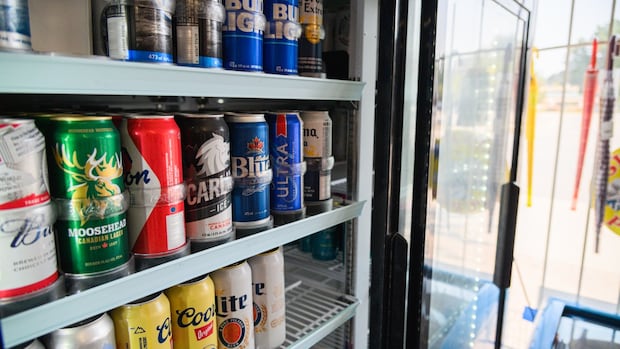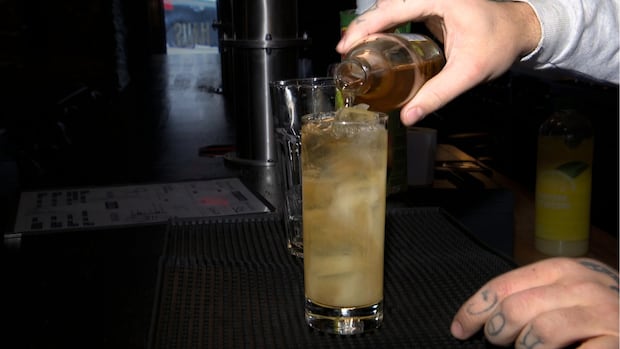The Current27:00How to help a loved one drink less
It’s a new year, and some Canadians are embarking on Dry January, following a holiday season replete with toasts and tipples. But author and journalist Maureen Palmer and her partner Mike Pond believe the ways we think about problem drinking could do more harm than good.
For example, is abstinence the only acceptable goal for every person who drinks too much? If one relapses, does that mean they’ve failed, and previous progress should be discounted?
According to Palmer, a person’s relationship with alcohol is far more nuanced than a simple question of whether they’re an alcoholic or not. And some experts say that understanding the grey area between the two might offer better solutions for some.
Her recent book — perhaps provocatively titled You Don’t Have To Quit — explores research and offers strategies for people to help their loved ones drink less.
“I take it two ways,” Palmer told The Current’s Matt Galloway, about the title.
“No. 1 is you don’t have to quit to be the entry point into a healthier relationship with alcohol. Ultimately, you may end up quitting.
“The other thing is I’m writing primarily for the loved ones of drinkers, heavy drinkers. And I’m saying you don’t have to quit on the relationship, as well.”
Palmer, 67, has first-hand experience with these strategies, as her partner Pond, 71, previously struggled with alcohol dependence for five decades. Today, he’s a therapist who specializes in treating addiction.
Pond’s troubles with alcohol at one point left him “homeless [and] penniless on the Downtown Eastside” of Vancouver, in his own words. He’d been sober for just over a year when he met Palmer. Through their relationship, Pond says he maintained that abstinence for five and a half years, before starting to drink again.
Now, Pond says he might have one or two drinking episodes a year — which might mean drinking a mickey of hard liquor. But it’s a long way from previous years that might have included 10 or more of those episodes annually.
One key to that progress for Pond was thinking about those episodes as part of a winding journey, rather than a hard fail.
“The AA [Alcoholics Anonymous] way of viewing it is that if you have one drop, that’s it, down you go,” he said.
He argues that thinking of it only this way can lead to worse outcomes.
“I’ve been abstinent. I violated it. And the effect is: ‘There I go. I’m a loser. I’m an alcoholic, and I’ve got to start all over again. It’s a fail.’ And, you know, ‘I might as well keep drinking.'”
The Canadian Cancer Society isn’t alone in supporting the U.S. surgeon general’s push for cancer risk labels on alcoholic products, like those seen on cigarette packs.
Grey drinking
One term used to describe the middle area is grey-area drinking, or simply grey drinking. That typically means drinking more than recommended limits, but not enough to meet the higher end of alcohol use disorder.
Catharine Fairbairn, an associate professor who runs an alcohol research lab at the University of Illinois Urbana-Champaign, says this term may carry less social stigma compared to being labelled an alcoholic.
“We have thought about people as two categories: alcoholics and non-alcoholics. And there hasn’t been room for people to consider that there might be a spectrum,” she told CBC’s Geoff Turner on the podcast On Drugs.
But she cautions that even what’s considered moderate alcohol use has risks, and that just one night of heavy drinking can result in issues ranging from relationship problems to losing one’s driver’s licence or job.
On Drugs39:35S3 E1 Why don’t I stop drinking?
Dr. Evan Wood, an addiction medicine specialist at the University of British Columbia, notes that there isn’t a one-size-fits-all solution to an alcohol use disorder — whether that’s total sobriety or a moderation-focused approach.
“A sort of abstinence-oriented model, as Mike [Pond] says, does create a sense of shame and can push people away from care. You know, that’s hugely, hugely problematic,” said Wood, who co-wrote Canada’s first clinical guidelines for treating high-risk drinking and alcohol use disorder, introduced in late 2023.
“At the same time, you know, for others … abstinence is really important and has saved their lives. And so it’s really complex.”
He added that Palmer and Pond’s story is a reminder that cutting down on alcohol use “can be a moving target,” requires a pragmatic approach and that support from loved ones can be critical.
Much of Palmer and Pond’s work draws on the research of Dr. William Miller, a researcher who in the 2010s conducted a large study of alcohol use treatment in the U.S. over the course of a year.
“One year later, 22 or 25 per cent of people were totally abstinent. So that’s, in his mind, a complete remission. The other 75 per cent had a dramatic reduction in drinking,” said Palmer, reducing their drinking by about 87 per cent.
“He says in any other condition, the 25 per cent total remission and the 87 per cent reduction in drinking is a huge win, but only in the way we view abstinence do we consider that 75 per cent that drank dramatically less: a fail.”
In a separate study, Miller followed people who chose to moderate their drinking. He found that the vast majority of them eventually became nearly or completely abstinent.
Quitting can be like a bad breakup
Fairbairn, the Illinois professor, told Turner that moderation can be likened to going through a messy breakup, involving on-again, off-again phases with a partner until you ultimately realize you aren’t a good match. While a clean, total breakup might be the ideal scenario, the truth is it’s not always that easy.
“I have had more than one client refer to alcohol as the love of their life and their best friend,” she said.
“I think there is a sense of personal and relationship loss when people lose alcohol. And it takes ages and sometimes multiple rounds of treatment, multiple rounds of flirting with sobriety, in order for people to get there.”
To Palmer, it’s important to make progress, even if it’s incremental.
“From an individual health perspective, from a public policy perspective and certainly from a public purse perspective, any reduction in drinking should be categorized as a success.”



